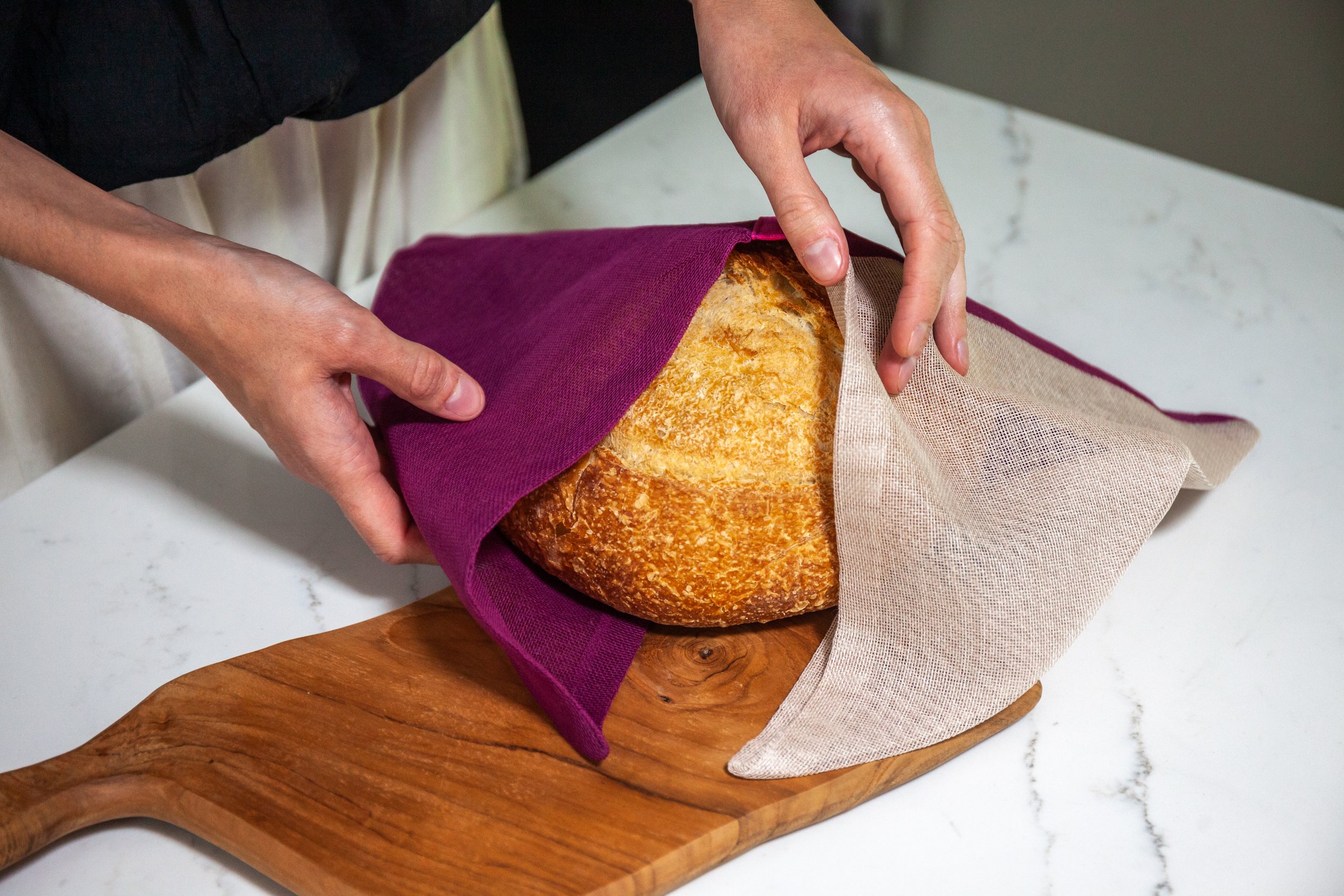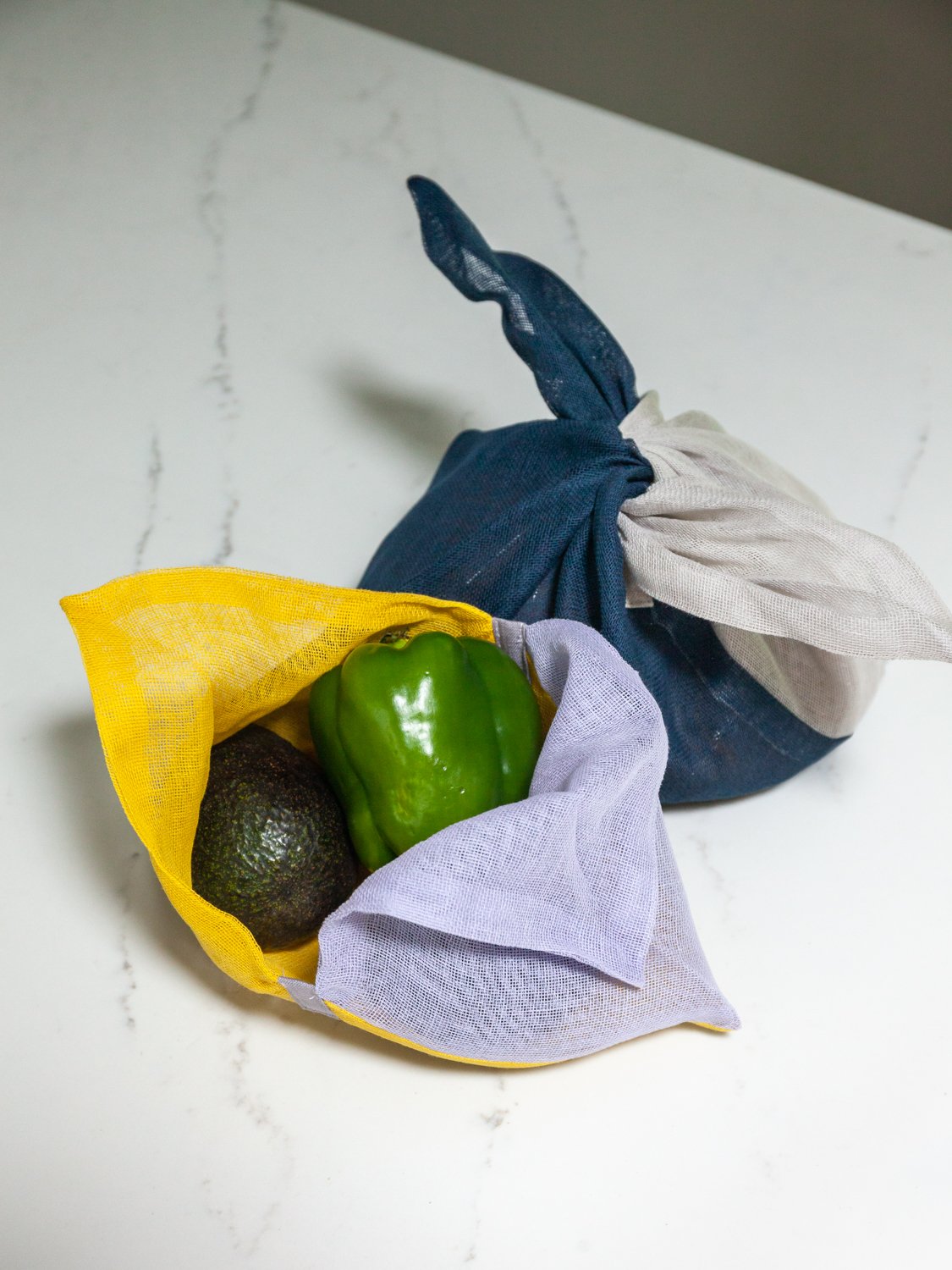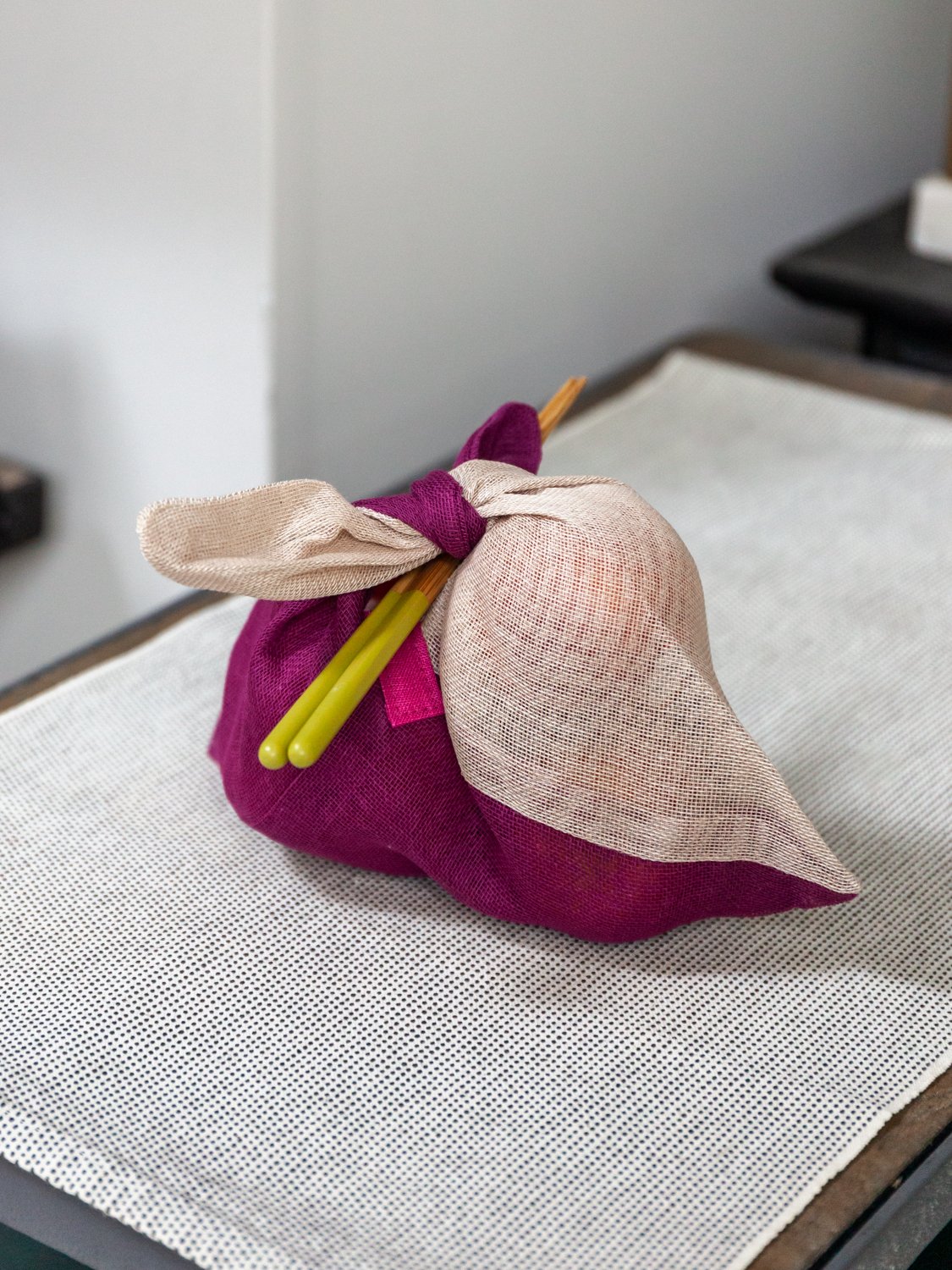Azumabukuro: The Original Eco-Bag
One of the latest additions to our roster of personal goods is the Two-Tone Miyuki Bag from CAYA, a colorful example of what’s often called an azumabukuro in Japan. For the curious, we thought we’d offer a quick overview of its origins and its role as a Japanese lifestyle essential.
Named after the Azuma people of Edo Tokyo, this bag (or bukuro) is an extension of its creators’ popular furoshiki wrapping technique. Inspired by Western fashion, Azuma craftspeople stitched together furoshiki cloth to create a tote that could be carried by a handle or worn over the shoulder. This new azumabukuro was perfect for shopping the local market stalls or transporting a bento lunch box, and it remains a staple accessory centuries later.
Now, as the world looks to replace single-use plastics with eco-friendly alternatives, the appeal of the azumabukuro is stronger than ever. Some manufacturers have even started to integrate recycled cotton, hemp, and mosquito netting into the production of their bags to further reduce waste.
In addition to being environmentally conscious, this design is unusually versatile. True to its furoshiki roots, an azumabukuro can be folded tightly for easy, out-of-the-way storage in a bag, closet, or vehicle, and the breezy fabric of this CAYA version makes it extremely light. Simply tie a knot at the top to create a handle or secure a wrapping and you’re ready to go; it’ll add a bit of flair to the look as well.
From its humble beginnings in the streets of Edo to its place in contemporary society, the azuma bag has survived fashion trends and cultural shifts to become something truly timeless. If you’d like to put its legacy to the test, check out the CAYA Miyuki Bag today.



